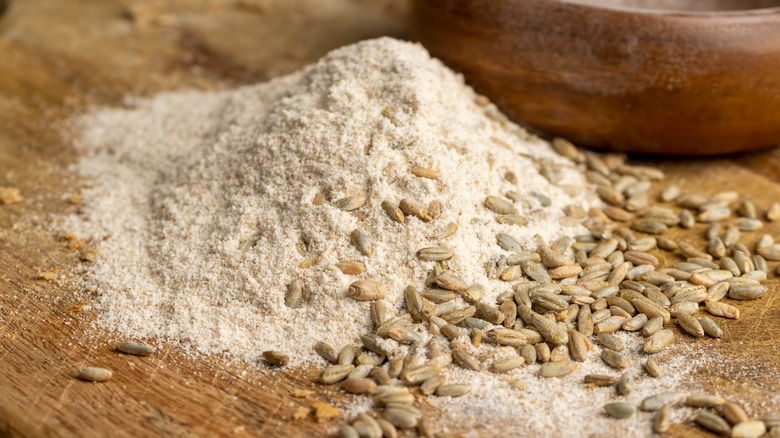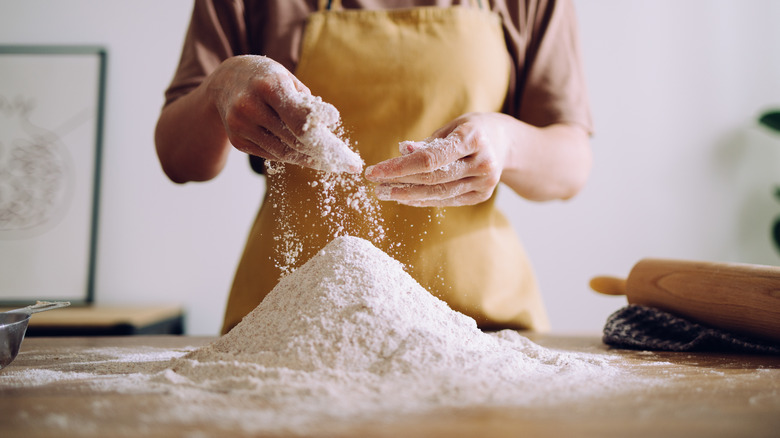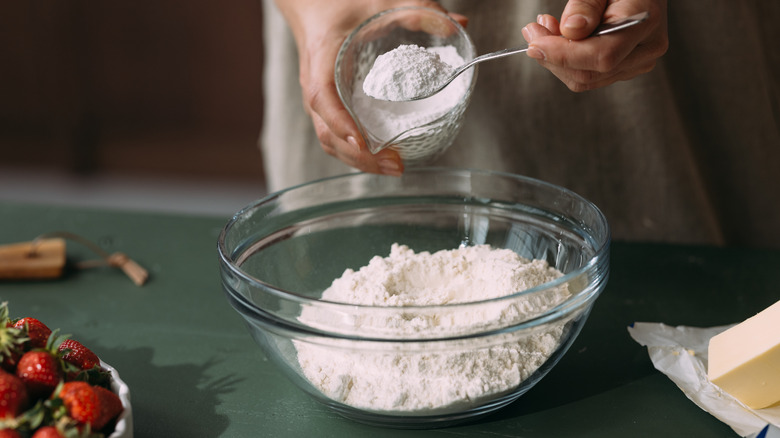Toasted Flour Is The Key To Bakery-Worthy Dough
Flour might just be the ingredient that makes any baker lose their cool in the kitchen. Just one measuring mistake can make homemade bread fall apart, and that doesn't even begin to account for the nuances of using the wrong type in a recipe. All-purpose, cake, bread, pastry flour — the list goes on. This might dissuade even the most resilient of beginner cooks from honing their baking skills, but there are a few tricks that professional chefs use to get restaurant-quality rolls and pastries. In fact, toasting your flour might be one of the easiest ways to elevate any dough or batter — thanks to how heat affects it.
Even if they don't look like it, most flours are considered raw until they undergo some sort of cooking process. Toasting essentially browns it, turning its initial chalky taste into something nuttier and more delectable. This can heighten the flavor of any baked good by giving it a subtle, complex roasted undertone that you won't get by using raw flour. Longer roasts will deepen the flavor and darken its color, but be careful not to burn it. Using high temperatures to toast this ingredient could cause it to burn and release an unsavory taste in your bread dough, so stick to low heat and watch for any unsightly colors or smells.
How to toast flour on the stovetop or oven
Before you even begin toasting, you should probably check and see if your flour has expired. Past its prime, this ingredient can develop signs of spoilage such as rotten flavors that no amount of browning will cover up, so ensure that you're not past the 'Best By' date. Once you've made sure your flour is still good, the most straightforward way to toast it is by sauteing it over medium heat on a stove. Once you've measured out the amount you need to use, pour it into the skillet and start whisking to prevent burning. The flour should be lightly toasted for about five minutes, but feel free to roast for up to 10 minutes if you want a nuttier flavor.
If you're working with a large amount of flour and don't want to work in batches, you can use the oven to toast it and get the same results. Preheat to around 350 degrees Fahrenheit, and as your oven warms up, cover a roasting tray with a heat-resistant pan liner and pour the flour over it. You should be able to just place it inside, walk away, and come back to perfectly toasted results, but you might have to give your pan a little shake or stir if you're cooking it for more than six minutes.
Use the microwave to toast flour in a pinch
Having to turn on the stove and take out a pan to just get some color in flour can feel excessive at best — especially when you're trying to avoid extra dishes. Luckily, the microwave toasts this ingredient just as well as the oven or cooktop, bypassing the need to dirty up an entire skillet or baking tray. You also won't have to wait for anything to preheat, making it an excellent option for those who need browned flour in a pinch.
To toast flour in the microwave, just place it in a microwave-safe bowl and cook in intervals of 30 seconds. You must stir between each round of heating to prevent things from burning. Keep doing this until your flour gets to 165 degrees Fahrenheit. At that point, it should be pasteurized and ready to use in either bread dough or even edible cookie dough.
Regardless of which method you use for toasting, the brand and even the level of starch can affect the nuttiness of your flour. Even where flour is grown can greatly affect its taste, so experiment with different brands and varieties to see which ones give you the best-roasted flavors in your baked goods.



